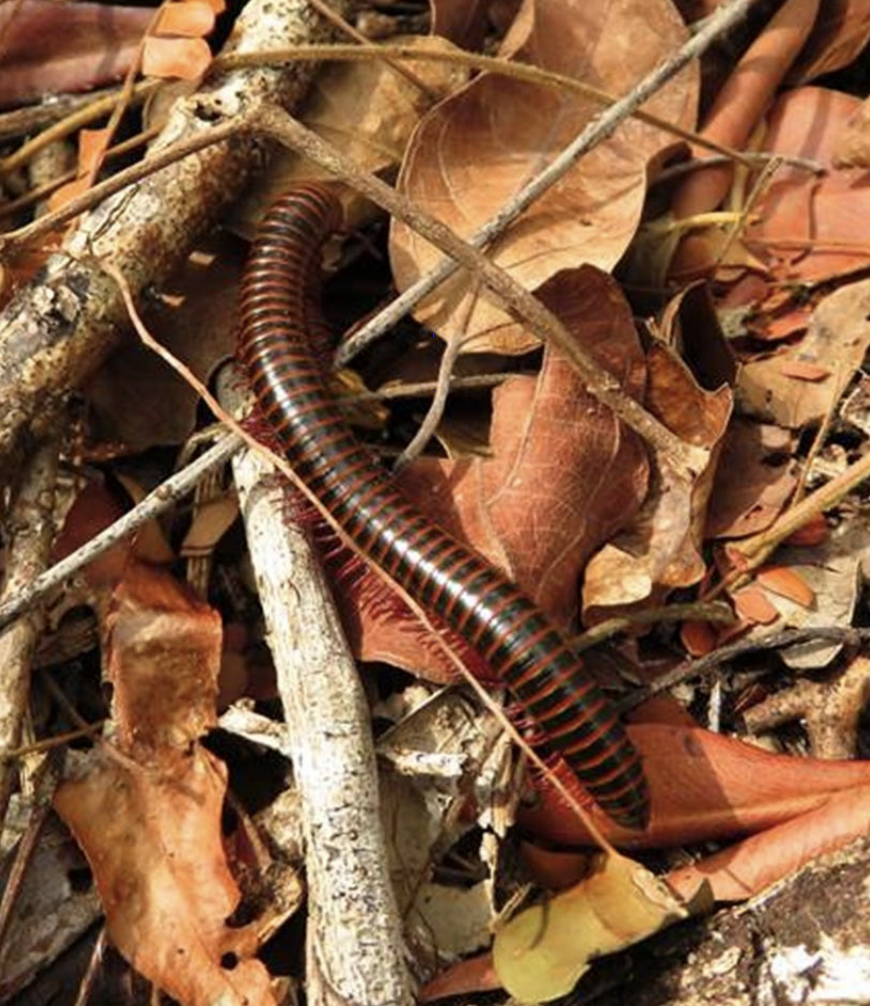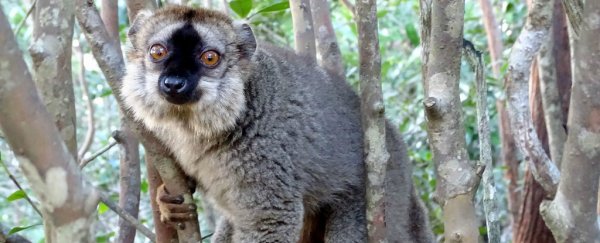In a rare and fortuitous moment, scientists have caught Madagascar's red-fronted lemurs (Eulemur rufifrons) gnawing on toxic millipedes and rubbing them all over their genitals and anuses.
The first-of-its-kind discovery was made in 2016 by Louise Peckre, an expert in primatology at the Leibniz Institute for Primate Research in Germany, when she was on a research expedition in a forest in central Madagascar.
Just after the first heavy rains of the season, Peckre and her colleagues noticed that some of the red-fronted lemurs were collecting toxic millipedes from the forest floor.
The millipedes had been driven out by the change in weather, and the opportunistic monkeys were not going to miss their chance.
The researchers watched in fascination as lemurs rubbed millipedes on their tail, anal region and genitals, then began chewing the millipede.
Then they repeated this rubbing and chewing, back and forth, eventually chewing the millipedes so vigorously an orange-coloured goo began seeping out of the corners of their mouths.
Sometimes, after all that chewing, the lemurs even swallowed the millipedes.
 (Louise Peckre)
(Louise Peckre)
As far as primates go, this sort of behavior isn't entirely out of the ordinary. Anybody who has visited the zoo or watched Planet Earth knows that primates have a habit of rubbing foreign objects on just about every possible body part, including all their most sensitive parts.
In one of the greatest euphemisms of all time, experts call this practice 'self-anointing', and they believe animals use it as a form of communication, as a way to remove toxic substances before eating, and even as self-medication.
In this particular case, however, Peckre and her colleagues think that the lemurs are chewing on the millipedes to treat and prevent issues like weight loss or itching - symptoms that are often caused by parasites.
"Self-anointment combined with eating millipede secretions may be a way of self-medication by red-fronted lemurs," says Peckre.
The big clue here is the millipedes themselves. These millipedes belong to the genus Sechelleptus, which is a family that tends to secrete toxic juices as a defence mechanism.
In this case, the juices are composed of benzoquinone, which, like its chemical cousin quinine, is a natural mosquito repellant.
 (Japan Monkey Centre 2018)
(Japan Monkey Centre 2018)
By chewing on the millipedes and smearing the toxic substance, it appears that the lemurs are using the benzoquinone to cleanse themselves of parasites that are often found in their gastric system and intestines.
As evidence for the theory, the researchers point to the group of parasites Oxyuridae nematode, which is a known and common worm living in and near the anus. The poor lemurs that are subject to this particular parasitic infection can break out in itchy rashes that are highly unpleasant to live with.
"Strikingly, during the fur-rubbing observations, we noticed the presence of bald areas on the lower back of many animals. These are known as sit spots, and are likely caused by repeated rubbing," explains Peckre.
"These bald areas may then indicate the presence of infections by Oxyuridae in the population at the time."
When humans want to cleanse themselves of parasites, we simply improve our personal hygiene, go to the doctor and take medication. Lemurs do not have this privilege, and so they must get creative.
For the red-fronted lemur, this means chewing, smearing and swallowing toxic millipedes as both treatment and prevention for similar parasitic infections. Or at least, that's the theory that Peckre and her colleagues have put forward.
The next step is to compare the current findings with other primates, like spider monkeys, which also use millipedes in a similar fashion. If their theory is correct, the researchers expect to find more examples of this behavior among primates that are exposed to digestive parasites.
The study has been published in Primates.
